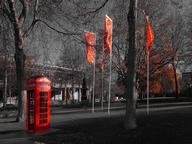Quiz Answer Key and Fun Facts
1. This bureaucrat of both the courts of King Edward III and King Richard II planned to write 120 verse tales--four told by each individual among 30 travellers--but composed only 22 complete stories and two partial ones before he died in 1400. Who was this "Father of English Poetry" influenced by Boccaccio's "Decameron"?
2. During the 1300's, someone composed a "vision" poem about a wilderness between the Tower of Truth and the Dungeon of Wrong and a humble commoner who appears to play a Christ figure guiding the people to Truth. What is the name of this long allegorical narrative poem, attributed to one William Langland?
3. Who was the Welsh cleric who lived from ca. 1100 to 1155 and wrote "The Prophecies of Merlin", the poetic "Life of Merlin", and the "History of the Kings of Britain", which contains the earliest full account of King Arthur's life as well as some of the life of Arthur's father Uther Pendragon?
4. What is the name of the fourteenth-century Welsh poet who wrote such passionate love poems as "Aubade", which, according to one translation, begins, "'O passing night, have pity', I said; / 'She is most lovely who shares my bed'. / But the brief night fled, and we, lover by lover, / Put a week in that night, and that all but over"?
5. In which lengthy romance tale told in verse would the reader encounter a scene in which one of King Arthur's knights cuts off the head of a large individual who has interrupted a Christmas feast and then watches the body of this beheaded intruder pick up its head and remount its horse?
6. One of the most well known of the many anonymous Middle English lyric poems begins, "Sumer is icumen in" (or "Summer/Spring is a-coming in") and eventually remarks how the "bucke ferteth" (or the "buck farts"). The poem is often referred to by its first line; however, it is just as often referred to by another title. What is this title derived from the name of a bird that keeps singing throughout the entire poem?
7. Composed probably during the thirteenth century, this debate poem is an argument between two creatures, one a nocturnal tree dweller and the other a diurnal ground dweller. They are symbolic representations of those who would live a religious life of sober restraint and those who would live a religious life of cheerful enjoyment. What is the title of this anonymously written verse contest?
8. What anonymous late fifteenth-century allegorical play about mankind's representative pleading his case to enter Heaven begins with the following preface: "Here Begynneth a Treatyse How Ye Hye Fader of Heuen sendeth Dethe to Somon Euery Creature to come and gyue Acounte of theyr Lyues in this Worlde, and is in Maner of a Morall Playe"?
9. Which fifteenth-century writer composed his contribution to English literature--"Le Morte D'Arthur"--while sitting in prison, and used the story of the destruction of King Arthur's kingdom as a veiled commentary on the contemporary destruction of England during the War of the Roses?
10. An old carpenter hides in a tub after having been warned by a boarder in his house that a flood is coming; meanwhile, this boarder and the carpenter's wife make love in the carpenter's bed. A cleric, who is also pursuing the carpenter's wife, climbs up to her window to woo her, the boarder farts in the cleric's face, and then the cleric burns the boarder's bottom with a red hot poker. Which of "The Canterbury Tales" has the preceding summary for a plot?
Source: Author
alaspooryoric
This quiz was reviewed by FunTrivia editor
looney_tunes before going online.
Any errors found in FunTrivia content are routinely corrected through our feedback system.

